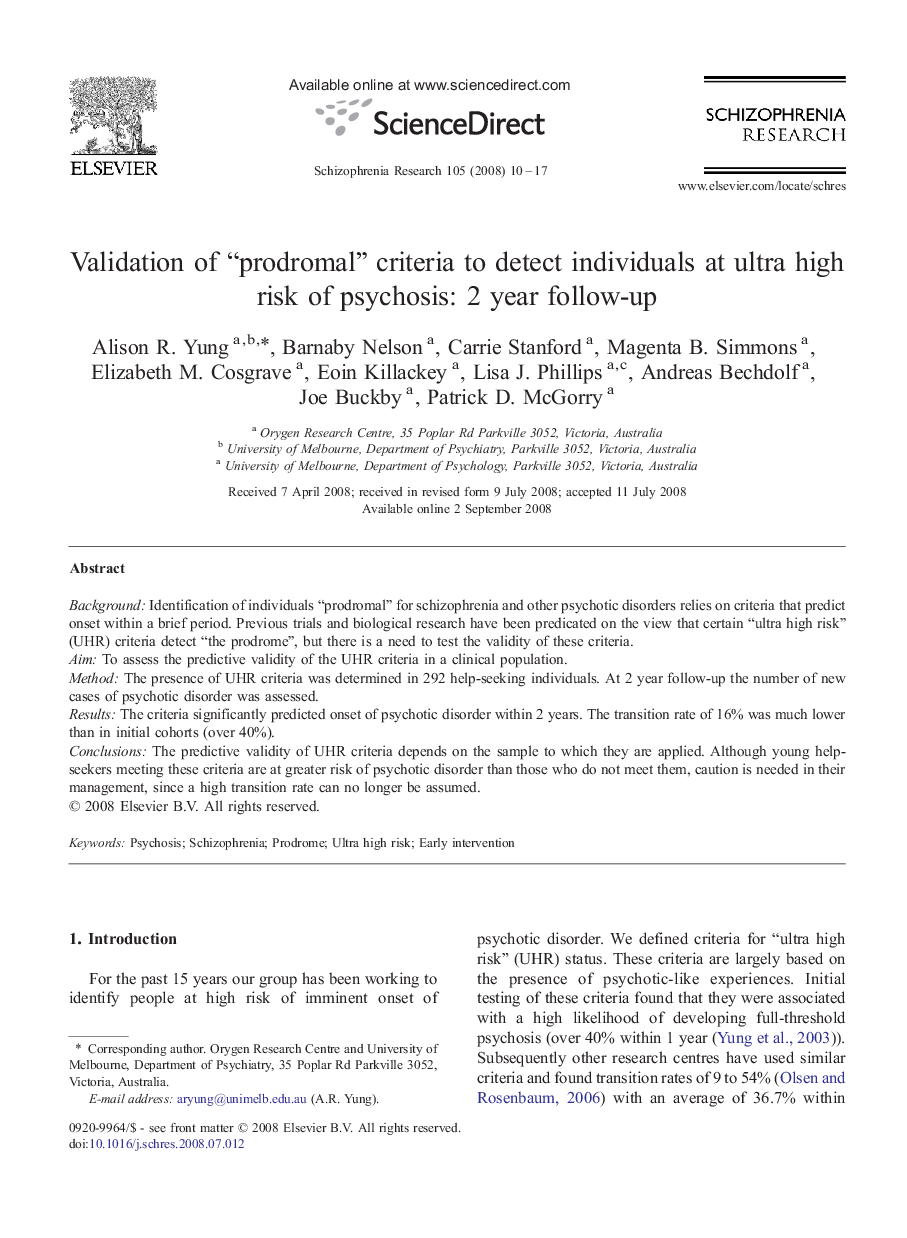| Article ID | Journal | Published Year | Pages | File Type |
|---|---|---|---|---|
| 338751 | Schizophrenia Research | 2008 | 8 Pages |
BackgroundIdentification of individuals “prodromal” for schizophrenia and other psychotic disorders relies on criteria that predict onset within a brief period. Previous trials and biological research have been predicated on the view that certain “ultra high risk” (UHR) criteria detect “the prodrome”, but there is a need to test the validity of these criteria.AimTo assess the predictive validity of the UHR criteria in a clinical population.MethodThe presence of UHR criteria was determined in 292 help-seeking individuals. At 2 year follow-up the number of new cases of psychotic disorder was assessed.ResultsThe criteria significantly predicted onset of psychotic disorder within 2 years. The transition rate of 16% was much lower than in initial cohorts (over 40%).ConclusionsThe predictive validity of UHR criteria depends on the sample to which they are applied. Although young help-seekers meeting these criteria are at greater risk of psychotic disorder than those who do not meet them, caution is needed in their management, since a high transition rate can no longer be assumed.
